Letter of Intent Template for Purchasing Goods
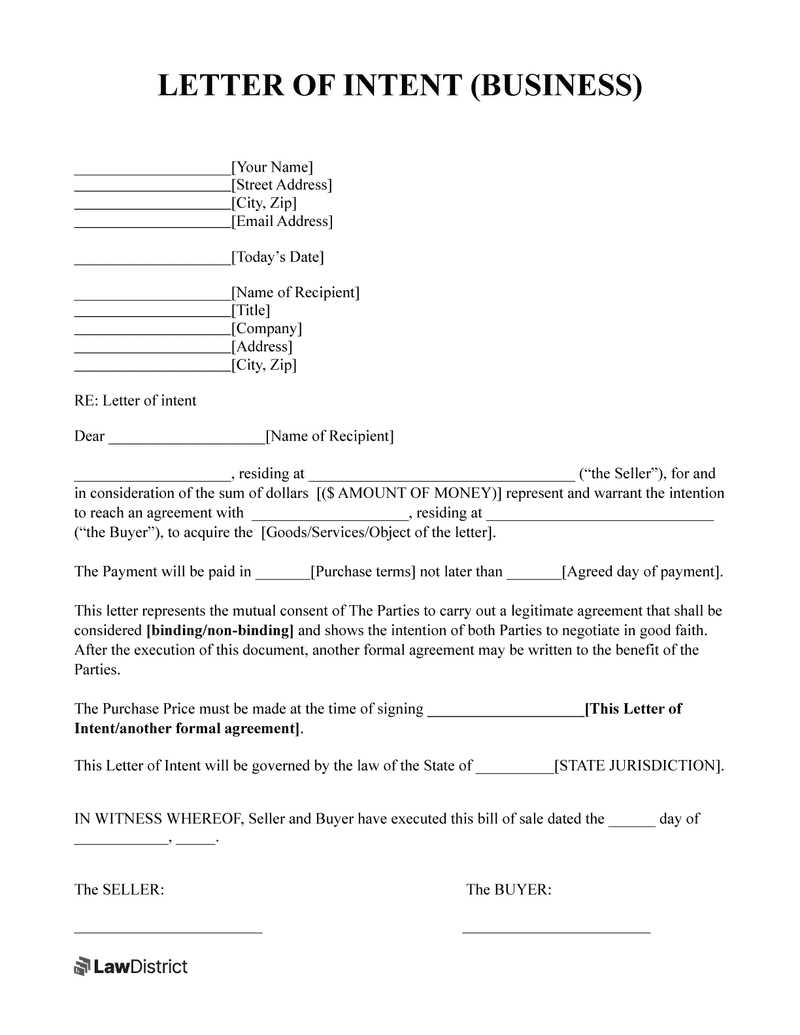
In business dealings, it is often crucial to outline the key aspects of a deal before formalizing it with a contract. A preliminary document helps clarify both parties’ intentions and ensures mutual understanding. This step provides a foundation for negotiating terms and can act as a safeguard in case of future disputes.
Effective communication is the backbone of any successful transaction. When entering an agreement, a well-drafted document can pave the way for smoother negotiations and reduce the chances of misunderstanding. It lays out the framework for the deal, allowing both parties to assess whether they are aligned in terms of expectations and responsibilities.
Whether you are engaging with a new vendor or negotiating with an existing partner, having a clear outline of your intent can provide confidence and direction. This type of agreement serves as a reference point that may guide further actions and set the stage for more formal arrangements later in the process.
Understanding the Purpose of a Preliminary Agreement
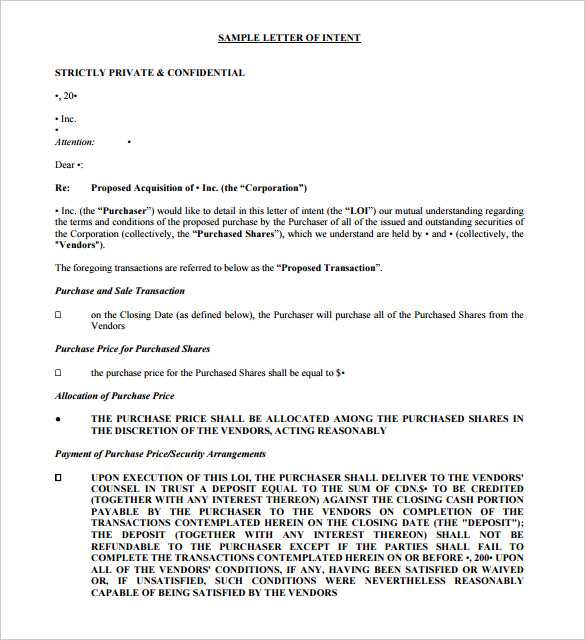
In any business relationship, it’s vital to ensure both parties share the same understanding of the upcoming collaboration. A preliminary document acts as a formal expression of interest, which outlines the main terms before a full contract is drawn up. It helps avoid confusion and sets expectations clearly from the beginning.
This type of document serves several key purposes:
- Clarifying the primary terms of the deal before committing to a formal contract.
- Establishing a mutual understanding of the key aspects, such as timelines, pricing, and other essential conditions.
- Serving as a starting point for more detailed negotiations.
- Creating a non-binding commitment, which allows both sides to review terms without legal obligations.
By laying out these basic points, the preliminary agreement helps both parties assess whether they are aligned in their goals and intentions, reducing the likelihood of misunderstandings or disputes in the future. It is often seen as an important step that prepares the ground for more in-depth contract discussions, allowing for smoother and more efficient business interactions.
Key Elements in a Purchase Agreement
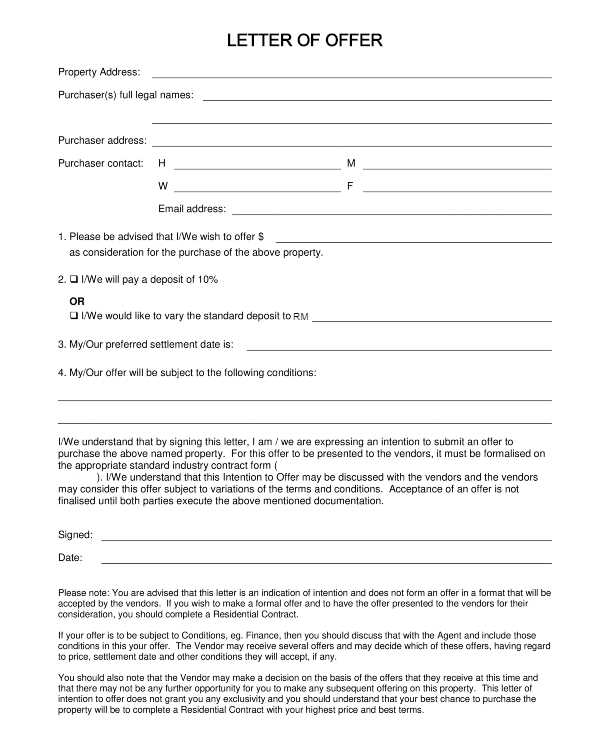
When drafting any agreement between two parties, it is essential to include certain key components that outline the framework of the deal. These components provide clarity and protect the interests of both the buyer and the seller. A well-structured agreement serves as a reference point to avoid confusion during the course of the transaction.
The most important elements typically include:
- Parties Involved: Clearly identifying the buyer and the seller, including their legal names and contact details.
- Item Description: A detailed description of the items being exchanged, including quantity, quality, and specifications.
- Price and Payment Terms: Outlining the agreed-upon cost and any payment structures, including deadlines and methods of payment.
- Delivery and Timeframes: Establishing when and how the items will be delivered, as well as any expected delivery dates or timeframes.
- Conditions of Sale: Any specific conditions or terms that must be met by either party before finalizing the deal.
- Legal Considerations: Stipulations regarding laws, jurisdictions, and any dispute resolution methods to be used if disagreements arise.
Including these elements in an agreement helps ensure both parties are on the same page and that there are no unexpected issues during the transaction. A well-crafted document can reduce the risks of misunderstandings and provide a clear path toward completing the deal.
How to Draft a Preliminary Agreement
Creating a formal document to outline the basic terms of a transaction is a crucial step to ensure both parties are aligned before finalizing any agreements. A well-written document helps clarify the intentions and expectations of both sides while providing a clear foundation for further negotiations.
Steps to Write a Clear Agreement
Follow these steps to ensure your agreement is comprehensive and professional:
- Identify the Parties: Clearly state the names and contact details of both the buyer and the seller.
- Describe the Items: Provide a detailed description of the items involved, including quantity, specifications, and any other relevant details.
- Outline Terms and Conditions: Set forth the key terms, including delivery schedules, payment arrangements, and any other specific conditions that must be met.
- Define Legal Aspects: Include provisions related to governing laws, dispute resolution procedures, and any regulatory considerations.
- Set a Timeline: Include specific dates for key actions, such as when the agreement will take effect and when the transaction is expected to be completed.
Finalizing the Agreement
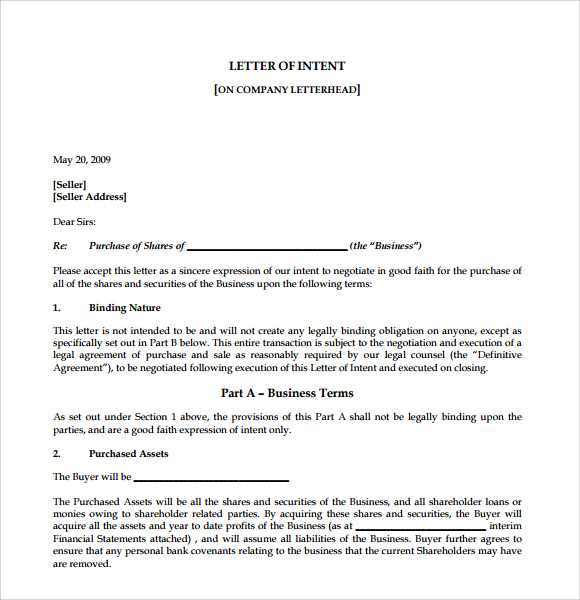
Before sending the document, review it thoroughly to ensure all necessary details are covered and that the language is clear and precise. Once both parties have agreed to the terms, it can be signed and serve as a reference for the next steps in the process.
Common Mistakes to Avoid in Preliminary Agreements
When drafting a preliminary agreement, it’s easy to overlook key details that can lead to confusion or disputes later on. Being aware of common pitfalls can help you create a more effective document that accurately represents both parties’ interests. By avoiding these mistakes, you ensure that the agreement serves its purpose in setting clear expectations and guiding future actions.
Overlooking Key Terms
One of the most common mistakes is failing to include important terms that will impact the transaction. These may include:
- Clear delivery schedules
- Payment methods and deadlines
- Detailed descriptions of the items being exchanged
Vague Language and Ambiguity
Using vague or ambiguous language can lead to misunderstandings. It is essential to be specific and precise when outlining terms, timelines, and expectations. This prevents misinterpretation and helps both parties stay aligned in the future.
Another common mistake is not addressing contingencies. If certain conditions are required for the transaction to proceed, these should be clearly outlined in the document. Failing to do so may cause delays or disputes down the line.
Benefits of Using a Preliminary Agreement
Utilizing a preliminary document in business transactions can provide both parties with numerous advantages. By outlining the essential details before finalizing a formal contract, you can ensure that both sides are on the same page and reduce the likelihood of conflicts. This type of agreement lays the foundation for smoother and more efficient negotiations, making the entire process more predictable and transparent.
Key Advantages
Some of the primary benefits include:
- Clarity: Establishes clear terms and expectations from the beginning.
- Negotiation Framework: Provides a structure for further discussions, helping to avoid misunderstandings.
- Risk Mitigation: Helps identify potential issues early on, minimizing the chance of disputes later.
- Flexibility: Allows both parties to review and adjust the terms before committing to a full agreement.
Comparison of Traditional and Preliminary Agreements
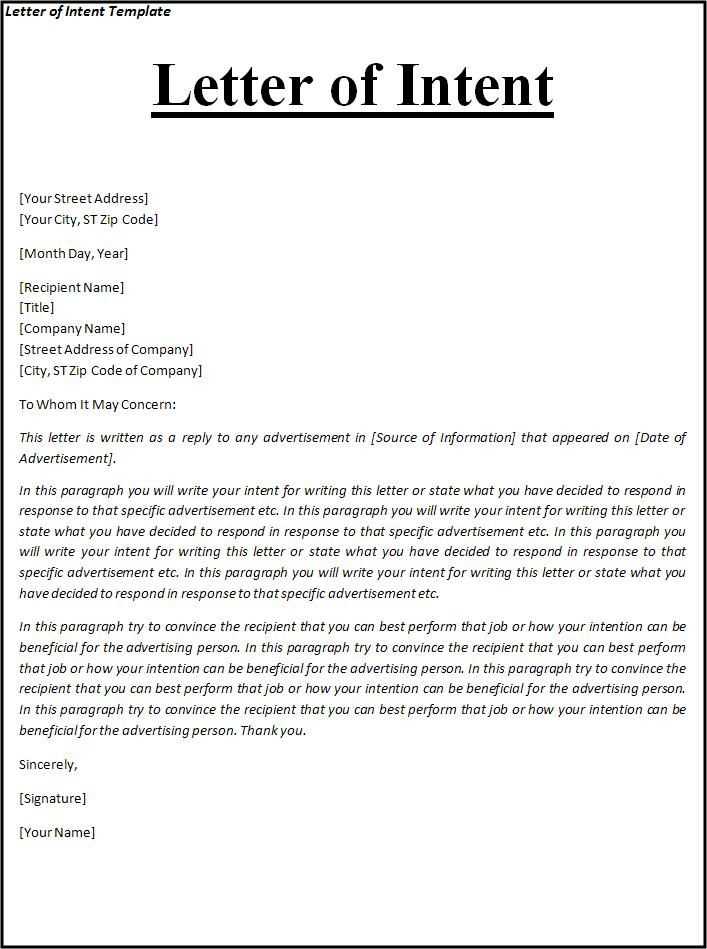
| Aspect | Traditional Contract | Preliminary Agreement |
|---|---|---|
| Clarity | Highly detailed | Broad overview of terms |
| Commitment | Binding and legally enforceable | Non-binding, subject to further negotiation |
| Flexibility | Limited flexibility | Offers room for adjustments |
| Time and Cost | Can be time-consuming and expensive | Faster and more cost-effective |
By incorporating a preliminary agreement, both parties can move forward with greater confidence, knowing they have a mutual understanding of the deal’s basic framework. This makes the final contract negotiations smoother and more focused on specific details rather than resolving misunderstandings.
How Preliminary Agreements Protect Buyers and Sellers
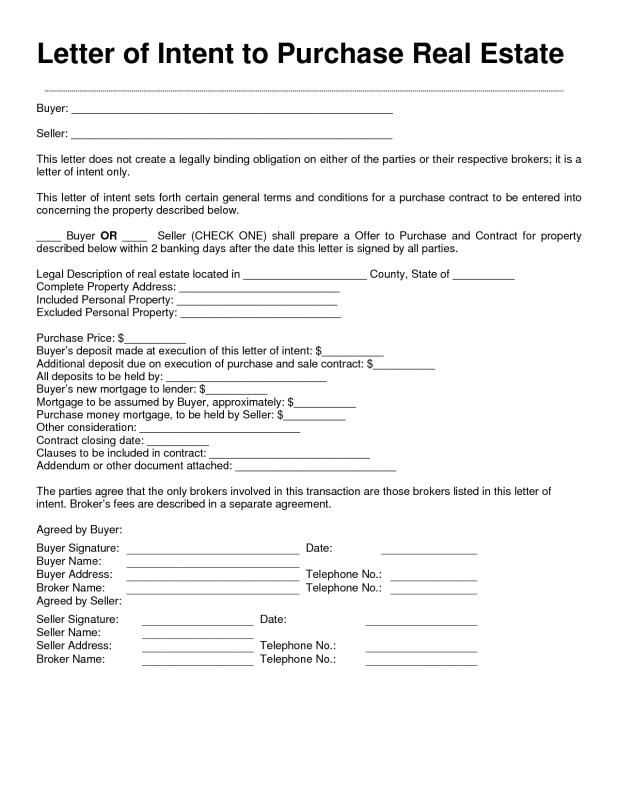
In any transaction, it is crucial to establish clear guidelines that ensure both parties are protected throughout the process. A preliminary agreement plays a significant role in safeguarding the interests of both the buyer and the seller. By outlining the main terms and expectations before proceeding with formal contracts, both parties can minimize risks and avoid potential disputes.
For the buyer, such agreements offer protection by:
- Ensuring clarity: Clearly defining the expectations and conditions of the deal, reducing the chances of unexpected issues.
- Allowing time to assess: Offering an opportunity to review and negotiate terms before making a final commitment.
- Providing negotiation power: Helping the buyer secure favorable conditions by formalizing the terms upfront.
On the other hand, the seller benefits by:
- Securing commitment: Ensuring that the buyer is serious and ready to proceed, avoiding time wasted on non-committed parties.
- Clarifying obligations: Defining payment terms, delivery schedules, and other conditions to reduce confusion and delays.
- Reducing risk of disputes: Outlining both parties’ expectations helps mitigate the chance of disagreements or breaches later on.
By using a preliminary agreement, both the buyer and seller gain a clearer understanding of the deal, fostering a smoother transaction and a stronger business relationship. This document acts as a safeguard to ensure that both parties have mutually agreed upon the key elements before committing to a binding contract.